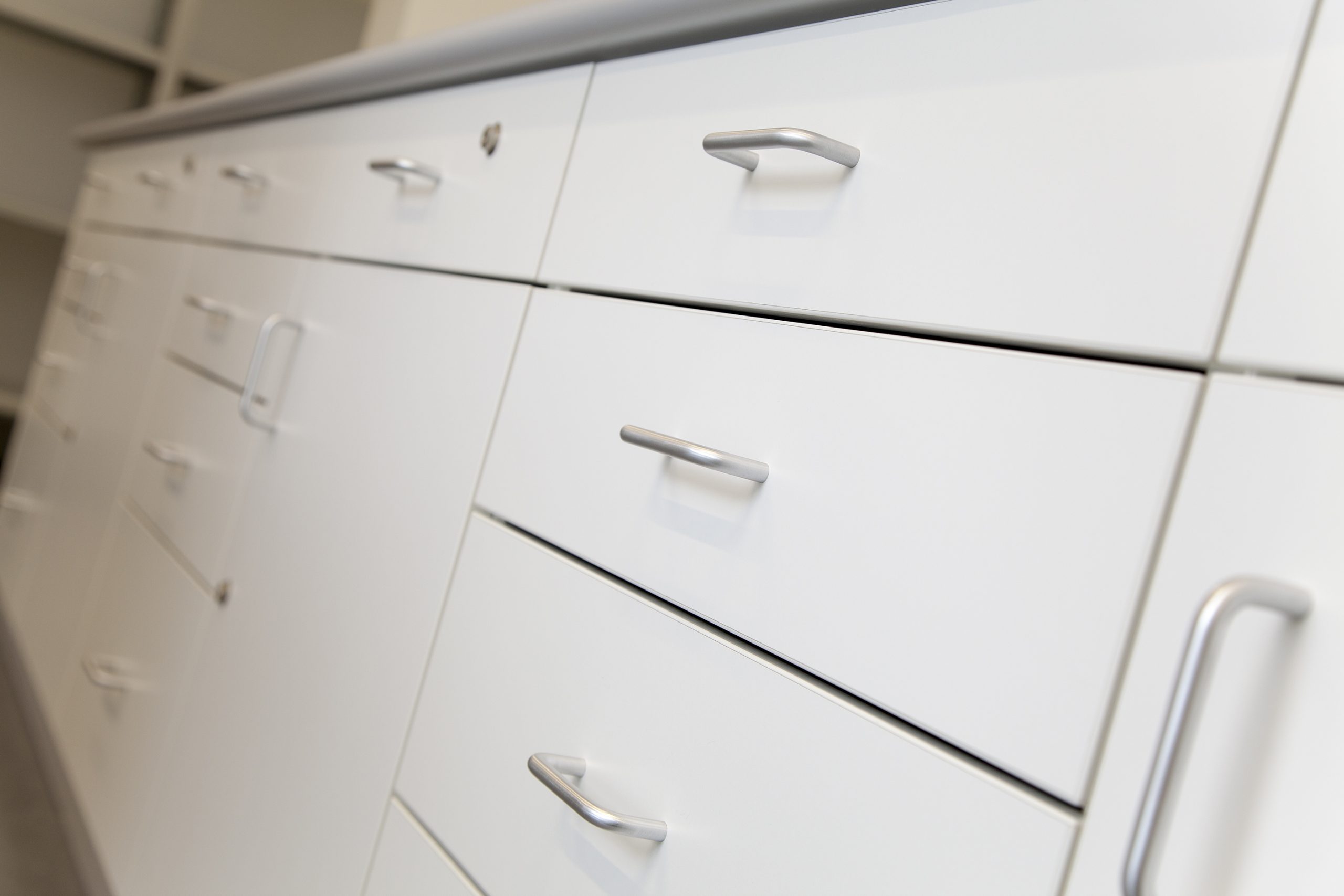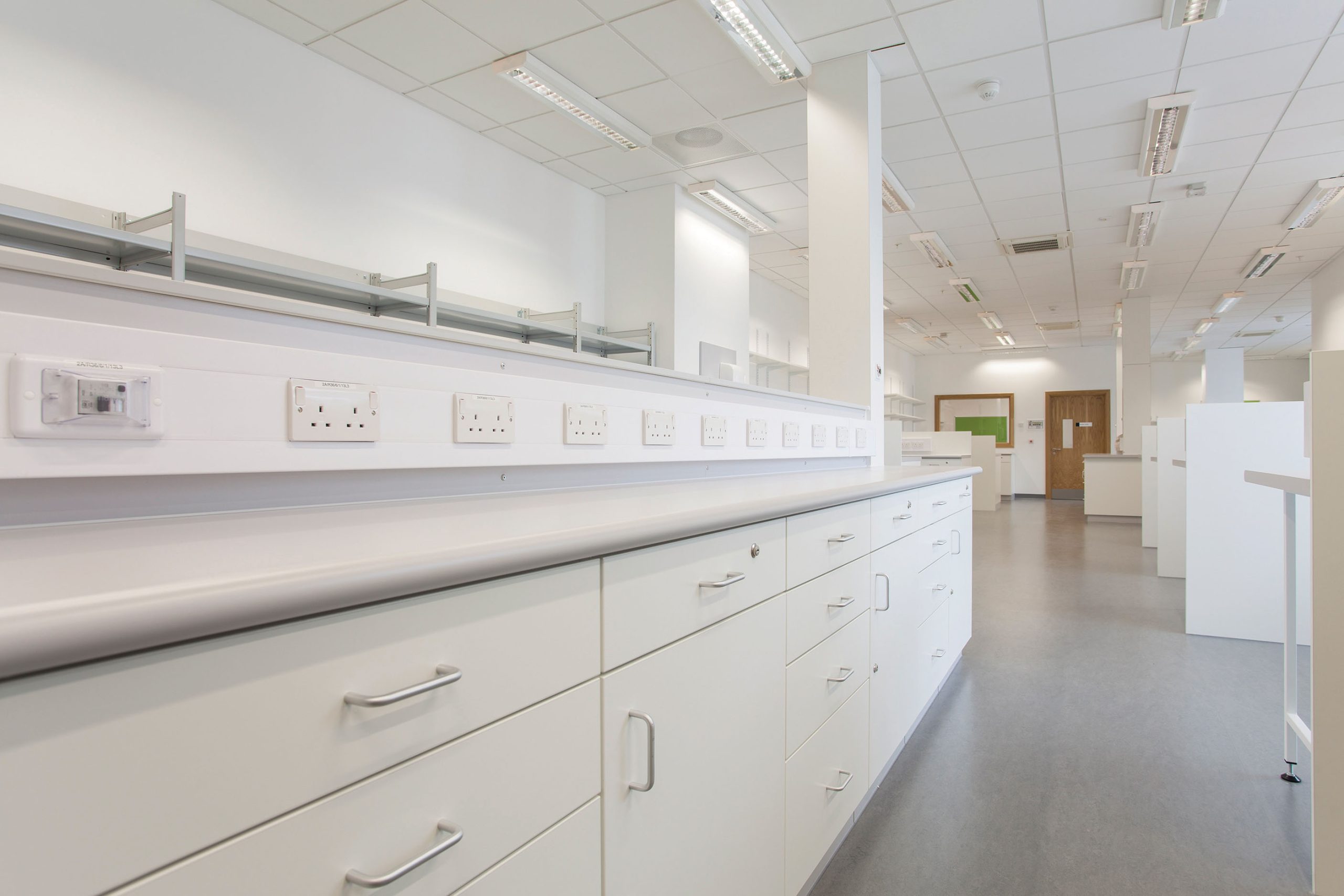You are probably talking about storage units, but we know what you mean. It’s a…

The history of fitted furniture and storage units in healthcare
By Tony Huggins, MD, David Bailey Furniture
Fitted furniture and storage units have been used in healthcare settings for centuries. The earliest examples of fitted furniture in healthcare were simple wooden shelves and cupboards that were built into walls or niches. These early pieces of furniture were often used to store food and other items for patients and staff.
In the 17th and 18th centuries, fitted furniture became more elaborate and sophisticated. As wealthy families began to commission fitted furniture for their homes, so too did hospitals and clinics. In the early days this furniture was often made from expensive materials, such as mahogany and walnut, and it was often decorated with intricate carvings and inlay work.
A good example is the Hôtel-Dieu de Paris, one of the oldest hospitals in the world. It was founded in the 7th century, and it has been continuously in operation ever since. The Hôtel-Dieu de Paris is home to a number of historical examples of fitted furniture, including a 17th-century pharmacy and a 19th-century operating room.
The Johns Hopkins Hospital, one of the leading teaching hospitals in the United States, was founded in 1889, and it is home to a number of historical examples of fitted furniture, including a 19th-century operating room and a 20th-century patient ward.
Here in the UK, we have our own history. The Great Ormond Street Hospital is a children’s hospital in London, was founded in 1852 and is home to a number of historical examples of fitted furniture, including a 19th-century nursery and a 20th-century playroom.
Fitted furniture first became more widely available in the 19th century, as the Industrial Revolution led to the mass production of furniture. This made fitted furniture more affordable for both middle-class families and healthcare facilities.
But it was not until the 20th century, that fitted furniture became even more popular in healthcare settings. This was due in part to the rise of the modern hospital, which was typically larger and more complex. Fitted furniture in turn helped healthcare facilities to make the most of their space and to create more efficient and productive workplaces.
Around this time, we saw a number of significant changes in the design and use of fitted furniture in hospitals. One of the most important was the development of modular furniture systems, made up of individual components that can be combined to create a variety of different configurations. This made it easier to design and install fitted furniture in hospitals, as it could be adapted to the specific needs of each individual space.
Another important change that occurred in the 20th century was the increasing use of materials such as steel and plastic in the construction of fitted furniture. These materials are durable and easy to clean, which makes them ideal for use in healthcare settings.
In the 21st century, fitted furniture has continued to evolve to meet the changing needs of hospitals. One of the most important trends has been the development of infection control-compliant furniture. This type of furniture is designed to minimise the risk of the spread of infection. Infection control-compliant furniture is often made from materials that are easy to clean and disinfect, and it has features such as smooth surfaces and rounded edges to prevent the accumulation of dirt and bacteria.
But why is fitted furniture in healthcare environments so important? In most hospital environments fitted furniture helps to improve the efficiency of healthcare facilities by providing dedicated storage solutions for medical supplies and equipment. This can help to reduce clutter and make it easier for staff to find what they need, when they need it.
Fitted furniture can also help to improve patient care by providing a more comfortable and inviting environment. It has also been proven to reduce the costs of healthcare facilities by providing durable and long-lasting storage solutions. This can lead to a reduction in maintenance and repair costs.
The global market for fitted furniture is expected to reach $135 billion by 2027 with the UK being one of the largest markets in the world. In broad terms the UK healthcare furniture market is expected to grow from £2.5 billion in 2020 to £3.8 billion by 2027.
This growth is being driven by a number of factors, including the increasing demand for healthcare services, the aging population, and the rising prevalence of chronic diseases. A recent industry study also found that the fitted furniture segment is the fastest-growing segment of the UK healthcare furniture market.
Our history is not quite so long, but we have been a leading provider of fitted furniture and storage units to the healthcare market for over 40 years. It means we have had plenty of experience in providing high-quality fitted furniture products and services to our healthcare customers.
As you would expect, David Bailey Furniture’s products are designed to meet the specific needs of the healthcare sector, and they are durable, easy to clean, and resistant to bacteria and we are looking forward to the next four decades.








